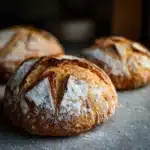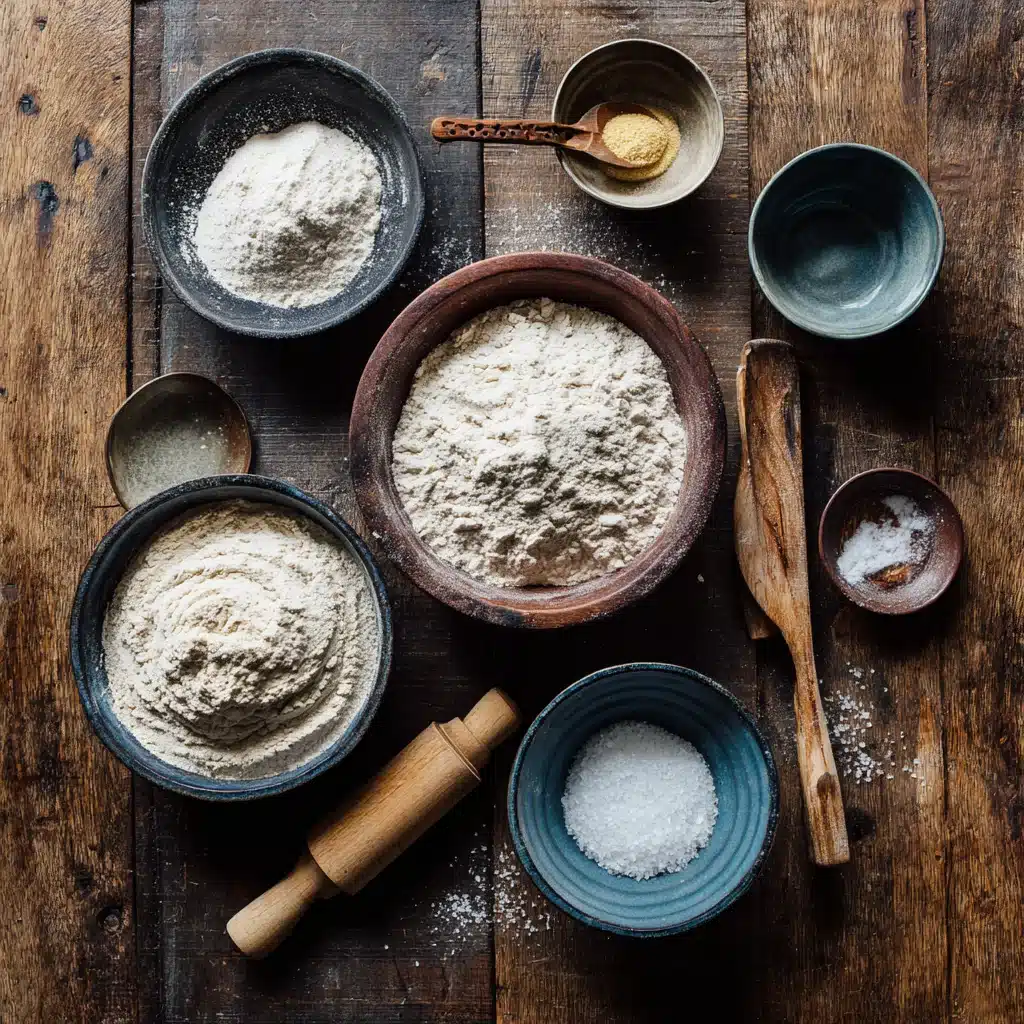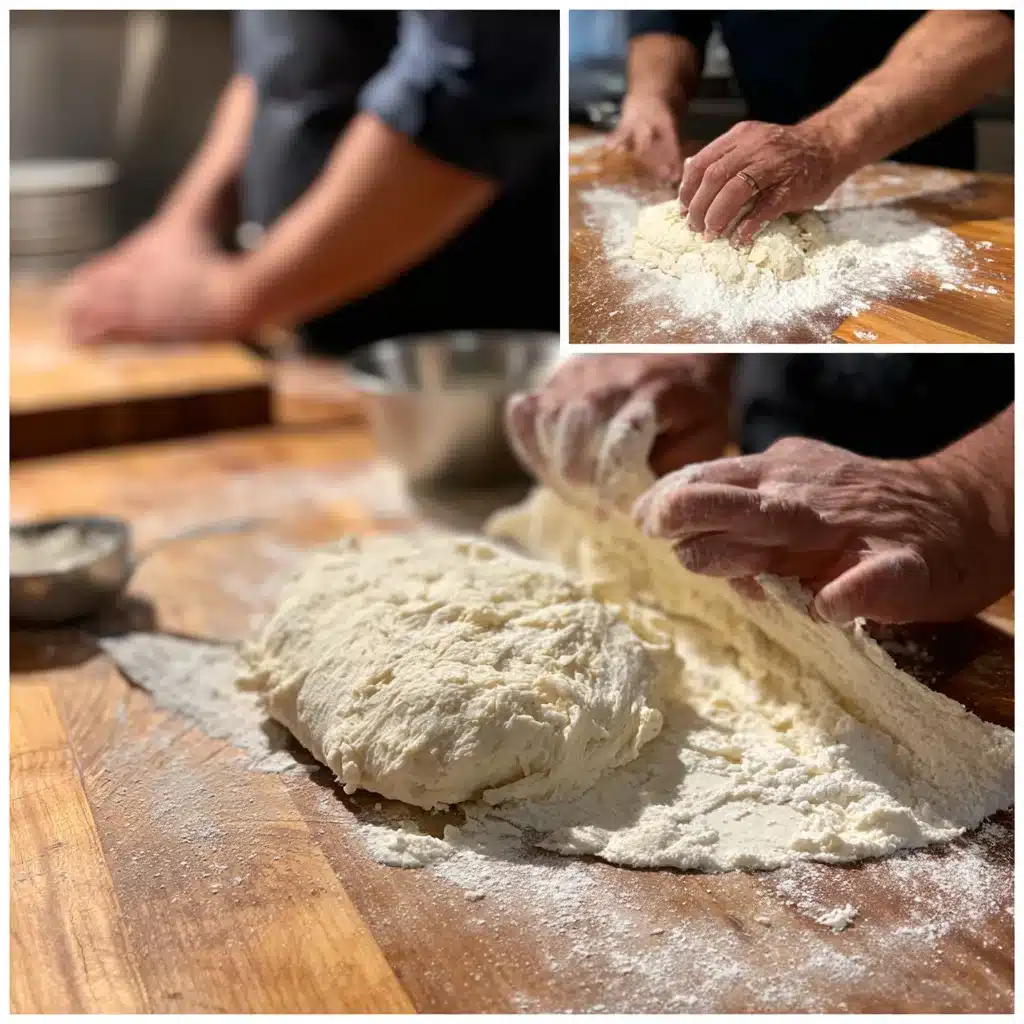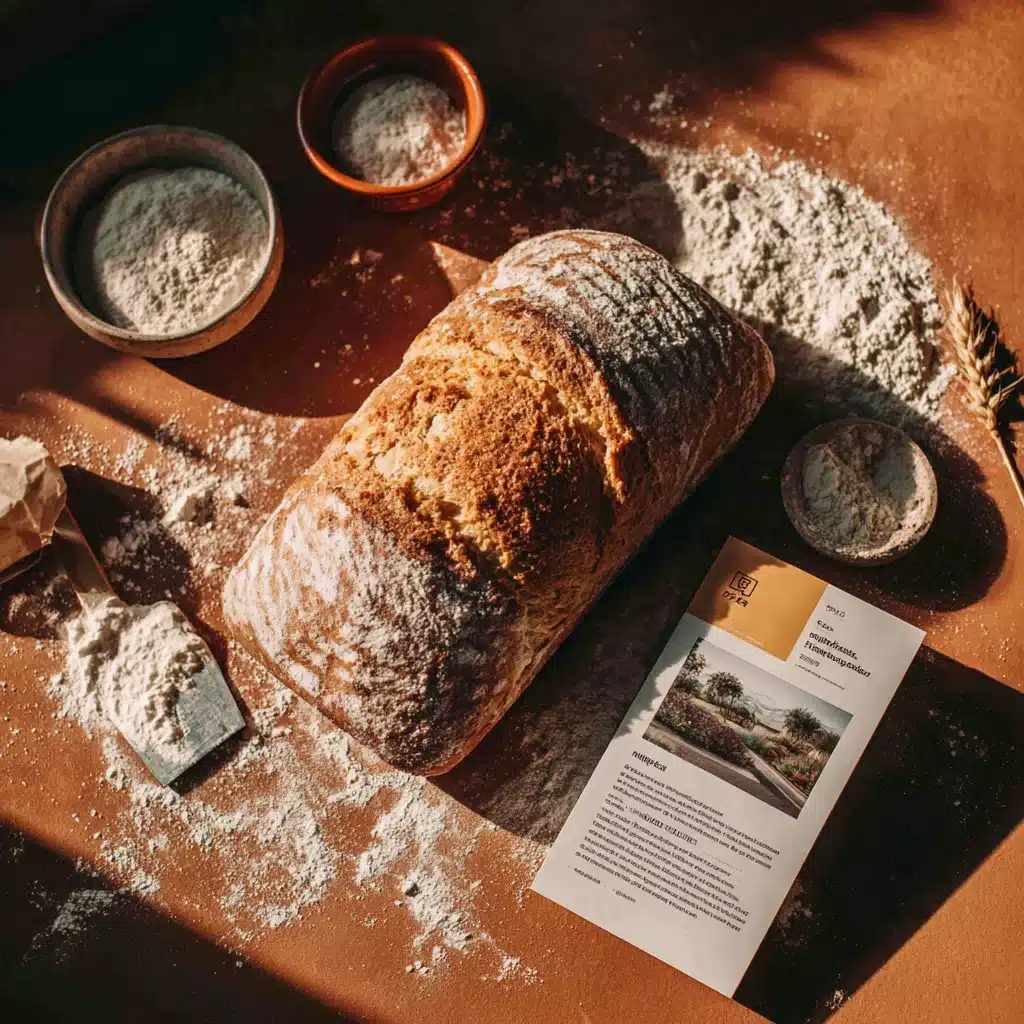This article dives into the powerful role bolted flour in sourdough bread plays in flavor, texture, and nutrition. You’ll learn what bolting flour means, how it compares to high extraction flours, and how to master its use for next-level sourdough. We’ll also address key baking questions and provide expert answers to ensure your loaves come out just right. Whether you’re experimenting with your first artisan bake or tweaking a favorite recipe, this guide will walk you through every step, starting with a story from my own humble kitchen.
The Story & Intro (Keyword-rich narrative )
Why I Love Baking with Bolted Flour
There’s something beautifully raw about baking with bolted flour in sourdough bread. It all started on a drizzly morning in Mendocino. The fog rolled through the trees while my kids, still in pajamas, asked if the house would “smell bready today.” I pulled out a paper bag marked “bolted hard red wheat” from a small mill up the coast. That’s when the magic began.
Back in my early days, I didn’t know the difference between all-purpose and high extraction flours. But once I discovered bolted flour, a flour that’s been partially sifted to retain just the right amount of bran, I was hooked. It bridges the gap between white and whole wheat, and it brings a boldness to your crumb that you just don’t get with regular flour. The result? A chewy, golden loaf with a whisper of rustic grain and the complexity only slow fermentation delivers.
Every batch I make with bolted flour in sourdough bread reminds me of those barefoot bakers I learned from, their counters dusted in flour and wisdom. Bolted flour asks you to pay attention. It drinks water differently. It ferments with more character. But in return, it gives your bread a voice, a nutty, wheaty whisper that says, “I came from something real.”
If you’ve never baked with it, don’t worry. This guide will show you how to use bolted flour in sourdough bread with confidence. You’ll find tips from my test bakes and real answers to questions like, What ingredient to avoid in sourdough bread? and Can I fix overproofed dough by adding flour?
Before we dive in, check out my foundational sourdough bread recipe and my go-to tips for perfect sourdough, they’ll pair perfectly with the bolted journey ahead.
Print
Bolted Flour in Sourdough Bread: Powerful Rise with 1 Flour
- Total Time: 14 hours 40 minutes
- Yield: 1 loaf (10–12 slices) 1x
- Diet: Vegetarian
Description
This rustic sourdough bread uses bolted flour, a high extraction flour that delivers deeper flavor and better nutrition without the density of whole wheat. Perfect for artisan bakers looking to elevate their loaves.
Ingredients
500g bolted hard wheat flour
100g active sourdough starter (100% hydration)
375g water (75% hydration to start)
10g sea salt
Instructions
1. In a large bowl, mix the bolted flour and water. Let rest for 1 hour (autolyse).
2. Add sourdough starter and mix until combined. Let rest 30 minutes.
3. Add salt. Perform 3–4 stretch and folds over 3 hours, resting 30 mins between.
4. Bulk ferment 4–6 hours at 70°F until doubled.
5. Shape and place into a floured banneton. Cold retard in fridge overnight.
6. Preheat Dutch oven to 475°F. Bake 20 min covered, 20 min uncovered.
7. Cool completely before slicing.
Notes
Increase hydration slightly if dough feels dry, bolted flour absorbs more water.
Avoid bleached flour, it harms fermentation.
Use this dough base for cheese, herb, or olive variations.
- Prep Time: 14 hours
- Cook Time: 40 minutes
- Category: Bread
- Method: Baking
- Cuisine: American
Nutrition
- Serving Size: 1 slice (1/12 loaf)
- Calories: 170
- Sugar: <1g
- Sodium: 180mg
- Fat: 0.5g
- Saturated Fat: 0.1g
- Unsaturated Fat: 0.4g
- Trans Fat: 0g
- Carbohydrates: 35g
- Fiber: 2g
- Protein: 6g
- Cholesterol: 0mg
Keywords: bolted flour, sourdough bread, high extraction flour, artisan sourdough, stone milled flour

Using Bolted Flour in Sourdough Bread
What Is Bolted Flour and Why It Matters
Bolted flour in sourdough bread is a game-changer, especially if you’re after a loaf that feels both rustic and refined. But what exactly is it? Bolted flour is partially sifted whole wheat flour, some of the bran is removed after stone milling, but not all. That gives you a high extraction flour with more flavor and nutrition than white flour, but better handling and texture than full whole wheat.
When you bake with bolted flour in sourdough bread, you’re getting the heart of the grain without the full density. It creates loaves that are deeply flavorful, with a slightly nutty profile and creamy-colored crumb. Bakers love it for its balance, it gives complexity without making the dough too heavy.
To use bolted flour in sourdough bread successfully, you’ll want to increase your hydration. This flour absorbs more water than typical white bread flour. Start by boosting hydration 5–10% and adjust as needed. During mixing, the dough may feel tight at first, give it time to rest and it will relax beautifully.
If you’re experimenting, swap 50–100% of the flour in your favorite sourdough recipe. You can try it in this classic sourdough bread guide or pair it with bold flavors like sharp cheddar using my cheese sourdough recipe.
King Arthur sells high-quality bolted flour options, but you can also explore regional mills that specialize in high extraction flour. Wherever you source it, the results speak for themselves. Bolted flour in sourdough bread brings out the grain’s essence, complex, hearty, and unforgettable.
Next up, we’ll break down how to troubleshoot and adapt your recipe when baking with this flour. Especially useful if you’re switching from white to whole grain blends.
Adapting Your Recipe for Bolted Flour in Sourdough Bread
Hydration, Texture & Timing Adjustments
Baking with bolted flour in sourdough bread requires a shift in mindset. Unlike all-purpose or even bread flour, bolted flour is thirstier. It still contains fine particles of bran, which absorb more water. So if your dough feels tighter than usual, don’t panic. Start with 75% hydration and build from there.
Autolyse is your best friend here. Let the flour absorb water before kneading, at least 30 to 60 minutes. You’ll notice your dough softens significantly. With bolted flour in sourdough bread, longer autolysis helps gluten form more gently and naturally.
You’ll also need to stretch and fold more mindfully. The bran particles can interrupt gluten strands. Don’t over-handle the dough, but build strength slowly. I usually do 3–4 sets of folds over 3 hours, with gentle handling. This process works beautifully in my perfect sourdough method.
Flavor Shifts and Fermentation Clues
One thing I love about bolted flour in sourdough bread is the aroma shift. Fermentation produces a toasty, nutty scent, deeper than white flour ever allows. But that also means it ferments slightly faster due to extra minerals in the flour.
So keep a close eye on bulk fermentation, especially if your kitchen runs warm. Overproofing with this flour is easy. If you’ve gone too far, you might try gently reshaping and giving it a cold retard overnight. Or bake it in a pan to salvage structure.
For flavor layering, pair bolted flour with sourdough discard in savory bakes, like these sourdough discard recipes, to reduce waste and boost tang.
By understanding how bolted flour behaves, you’ll learn to trust your dough, not just the clock. Next, we’ll answer some essential flour questions and break a few myths.

Mistakes to Avoid & Questions About Bolted Flour in Sourdough Bread
What to Watch Out For When Using Bolted Flour
The most common mistake when baking with bolted flour in sourdough bread? Treating it like white flour. Don’t do it. Bolted flour is higher in fiber and minerals, it’s not just flour with extra color. If you skip proper hydration or overwork the dough, you’ll end up with a dry, dense crumb or gummy interior.
Another misstep is ignoring fermentation timing. Bolted flour accelerates fermentation slightly because of its mineral content. If your dough doubles too fast, don’t wait. Shape it, chill it, and bake it. Want to recover an overproofed sourdough? You can add a sprinkle of flour during shaping, but it’s not a fix, it’s a crutch. Instead, adjust your bulk time next time or try a gentle fold and overnight fridge rest.
One ingredient to absolutely avoid in sourdough bread, especially with bolted flour, is bleached flour. It interferes with fermentation and kills the natural depth bolted flours offer. Stick to unbleached, organic flours to preserve your starter’s health and dough strength.
Understanding Bolted Flour & Flour Types
So, what is bolting flour? It’s the process of sifting whole wheat flour after milling to remove some, but not all, bran and germ. The result? A light brown, nutrient-rich flour that’s sometimes called high extraction flour.
What is bolted bread flour then? Simply put, it’s flour that’s been stone-ground and bolted for better performance in artisan-style breads. It behaves beautifully in formulas like this Ezekiel bread recipe or hearty, structured sourdoughs.
Still wondering if you can use bolted flour in sourdough bread recipes from Reddit or blogs? Yes, but expect to tweak hydration and fermentation slightly. Use a scale, and take notes. That’s the path to mastery.
Oh, and if you’re dealing with a sluggish or “off” starter? Before baking again, troubleshoot with this bad sourdough starter guide.
Conclusion: Why Bolted Flour Is Worth the Effort
Bolted flour in sourdough bread isn’t just an ingredient, it’s a philosophy. It’s about balance. You get the rich flavor of whole grain, the lightness of artisan bread, and the satisfaction of working with flour that still whispers of the wheat field.
From my first failed boules to loaves that sing when you slice them, bolted flour has taught me patience and precision. It challenges you to understand hydration, fermentation, and flavor in deeper ways.
If you’re ready to level up your baking, don’t wait. Pick up some high extraction or bolted flour, revisit your favorite sourdough formula, and start tweaking. And if you’re still unsure, this beginner’s sourdough guide is the perfect place to test the waters.
Mistakes are part of the recipe. But so is the joy of getting it just right.

FAQ About Bolted Flour in Sourdough Bread
What ingredient should I avoid in sourdough bread?
Avoid bleached flours and overly processed additives. These interfere with the fermentation process and can weaken your sourdough starter. If you’re using bolted flour in sourdough bread, stick to unbleached, organic, stone-milled options to enhance structure and flavor naturally.
What is bolted bread flour?
Bolted bread flour is whole wheat flour that has been sifted (or “bolted”) to remove the coarsest bran particles. It keeps much of the germ and fine bran, making it a high extraction flour. This type of flour performs beautifully in artisan sourdough bread, offering depth and nutrition without making the loaf too dense.
Can I add flour to overproofed sourdough?
Technically yes, but it’s a band-aid. Adding flour won’t truly reverse overproofing. It may firm up slack dough enough to bake, but you’ll likely sacrifice oven spring. A better recovery method? Shape it gently, place it in a pan, and refrigerate overnight. Then bake directly from the fridge.
What is bolting flour?
Bolting flour is the act of sifting freshly milled whole wheat to reduce the bran content. The finer flour that passes through the screen is called bolted flour. It retains more nutrients and flavor than white flour while improving dough elasticity and structure compared to full whole wheat.

